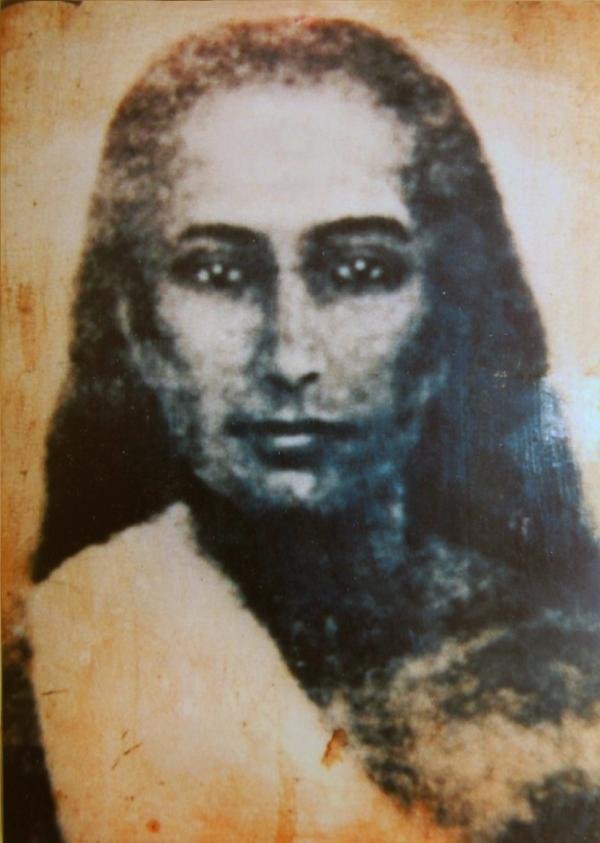
The Wild Seads Blog
Sarah Seads Coaching Notes / Health & Well-Being / Fitness
Use the content search box below to explore to your heart’s content!
Namaste:)
Trending Topics:
Kriya Pranayama
The Masters of Kriya Pranayama
Mahavatar Babaji: The Eternal Yogi
In the realm of spiritual enlightenment,
His teachings transcend religious boundaries, embracing all seekers indiscriminately, reminding them that divinity resides within and is accessible to all. Whether seeking enlightenment, solace, or a deeper connection with the divine, the presence and wisdom of Mahavatar Babaji beckon to the seekers of truth, inviting them to explore the boundless depths of the human spirit.
Benefits of Kriya Pranayama:
Enhanced Postural Awareness: Kriya Pranayama can improve your posture, helping you maintain a healthier and more comfortable physical alignment.
Optimal Oxygen Exchange: By mastering Kriya techniques, you'll experience improved oxygen exchange in your body, leading to better overall physical health and performance.
Calm and Quieted Mind: Kriya Pranayama is a powerful tool for quieting the mind. It provides a specific focus, leading to a heightened sense of calm and tranquility, making it easier to delve into deep meditation.
Pineal Gland Activation: The awakening of the pineal gland through Kriya practices can stimulate improved visualization, creative thinking, and expanded ideas, ultimately leading to a more vibrant and innovative mind.
What is Kriya Pranayama (pronounced Prah-nah-yahm) The purpose of Kriya Pranayama is to awaken awareness and activate higher states of consciousness. All Pranayama is beneficial for postural awareness, oxygen exchange, improved physical health & performance. In addition to improved sense of calm by quieting the mind using a specific focus. Kriya's are specific breathing techniques designed to use the energy in the body to clean it's energy centres and awaken the pineal gland (the gland associated with improved visualization, idea expansion, ingenuity and creative expression). Kriya's combine specific breathing techniques with visualization and a specific intention - and they make focusing during meditation practice much more enjoyable and with much greater ease!
Kriya Pranayama is a form of Pranayama, the ancient yogic practice of controlled breathing. The primary purpose of Kriya Pranayama is to expand awareness and activate elevated states of consciousness. While all forms of Pranayama offer advantages such as improved posture, enhanced oxygen exchange, and physical well-being, Kriya takes it a step further.
Kriya Pranayama techniques are specially designed to harness the body's energy to cleanse its energy centers, or chakras, and awaken the pineal gland. This gland, often referred to as the "third eye," is associated with improved visualization, idea expansion, ingenuity, and creative expression.
The Magic of Kriya: What sets Kriya Pranayama apart from other breathing practices is the combination of specific breathing techniques, visualization, and focused intention. This combination not only enhances your meditation experience but also makes it more enjoyable and accessible.
Kriya Yoga and Pranayama
Origins: Kriya Yoga is believed to be an ancient practice that was revived by Babaji. It's a comprehensive spiritual path that includes meditation techniques, ethical disciplines, and specific breathing exercises (Pranayama).
Kriya Pranayama: This is a central technique in Kriya Yoga involving controlled breathing. It is believed to accelerate spiritual development and foster a deep sense of inner peace.
Dissemination: The teachings of Kriya Yoga were popularized in the West through Paramahansa Yogananda, a direct disciple of Lahiri Mahasaya, who was in turn a disciple of Babaji. Yogananda’s book "Autobiography of a Yogi" contains many references to Babaji and explains Kriya Yoga principles.
Global Influence: The teachings of Babaji and the practice of Kriya Yoga have had a profound impact on spiritual seekers worldwide, transcending cultural and religious boundaries.
While Babaji remains an enigmatic figure, his attributed teachings and the practice of Kriya Pranayama continue to inspire and guide individuals on their spiritual journey. It's important to approach these teachings with respect for their traditional roots and an understanding of their deep spiritual significance.
Pranayama, when practiced correctly and under the guidance of an experienced instructor, can offer numerous benefits for mental and physical well-being. However, there are some contraindications and precautions to consider before engaging in Pranayama practices. It's essential to consult with a qualified yoga instructor or healthcare professional if you have any of the following conditions or situations:
Respiratory Conditions: Pranayama involves controlled breathing, so individuals with severe respiratory conditions such as chronic obstructive pulmonary disease (COPD), asthma, or acute bronchitis should consult their healthcare provider before attempting any Pranayama techniques.
Cardiovascular Issues: People with heart conditions, high blood pressure (hypertension), or a history of heart disease should practice Pranayama cautiously and under supervision. Certain breath-holding techniques may not be suitable for individuals with these conditions.
Pregnancy: Pregnant women should avoid certain Pranayama techniques, especially those involving forceful or rapid breath retention, as it may affect blood flow and oxygen supply to the fetus. It's essential to consult with a prenatal yoga instructor for suitable modifications.
Epilepsy: Pranayama practices that involve rapid, forceful breath retention may trigger seizures in individuals with epilepsy. It's crucial for those with epilepsy to consult their healthcare provider before attempting Pranayama.
Hernias: People with abdominal hernias, such as inguinal or umbilical hernias, should avoid Pranayama techniques that put excessive pressure on the abdominal area. Gentle practices and modifications may be necessary.
Recent Surgeries: Individuals who have undergone recent abdominal, chest, or head surgeries should avoid rigorous Pranayama practices until they receive clearance from their surgeon or healthcare provider.
Glaucoma: Pranayama practices that involve breath retention and increased intraocular pressure may not be suitable for individuals with glaucoma. Consult an eye specialist or healthcare provider before attempting these techniques.
Psychological Conditions: People with severe mental health conditions or a history of panic attacks should approach Pranayama with caution. Some Pranayama techniques may affect emotional states, and it's essential to practice under the guidance of a mental health professional if necessary.
Extreme Fatigue: Performing Pranayama when extremely fatigued or sleep-deprived can lead to dizziness or fainting. Ensure that you are well-rested before engaging in Pranayama practices.
Medication: Some medications may affect your ability to practice Pranayama safely. If you are taking medications that influence your respiratory or cardiovascular system, consult with your healthcare provider before starting Pranayama.
Pain or Discomfort: If you experience pain, discomfort, or any unusual sensations during Pranayama practice, stop immediately and seek guidance from a qualified instructor.
It's crucial to remember that Pranayama is a profound practice that should be approached mindfully and respectfully of your individual health and circumstances. Consult with a healthcare professional or experienced yoga instructor to determine the most suitable Pranayama techniques for your specific needs and to ensure a safe and beneficial practice. Always listen to your body and practice with awareness.
"Previous study on pranayama and hypertension showed a reduction in the heart rate, blood pressure, and rate pressure product [15]. Improvement in cardiorespiratory parameters were seen in a recent study on Nadi Shodhana Pranayama, which is suggestive of an increase in cardiorespiratory efficiency [16].Upadhyay, J., Nandish N. S., Shetty, S., Saoji, A. A., & Yadav, S. S. (2023). Effects of Nadishodhana and Bhramari Pranayama on heart rate variability, auditory reaction time, and blood pressure: A randomized clinical trial in hypertensive patients. Journal of Ayurveda and Integrative Medicine, 14(4), 100774."
There are plenty of scholarly articles depicting the benefits of Nadi Shodhana specifically as a form of Yogic Breathing with benefits for the body and mind. You can continue your education here and see where your research takes you.
Sarah Anne Seads, BA Kinesiology & YTT450hr is a student of Life, Human Physiology and the Science of the Mind. She spends as much time as possible studying the Game of Life through living her own experiences.






Wild Seads Coaching Blog Tags & Categories
- Ancestral Healing
- athletic coaching
- athletic performance
- downhill run coaching techniques
- Efficient and Fast Running
- Emotional Health
- Endurance Coaching Tips
- Endurance Running Tips
- England
- fitness
- fitness training
- key training principles
- Mental Well-Being
- Personal Healing
- physicalhealth
- Racing
- Trail Racing
- trail running
- Ultra Marathon Racing







